
A milk float is a vehicle specifically designed for the delivery of fresh milk. Today, milk floats are usually battery electric vehicles (BEV), but they were formerly horse-drawn floats. They were once common in many European countries, particularly the United Kingdom, and were operated by local dairies. However, in recent years, as the number of supermarkets, small independent grocers and petrol stations, and convenience stores stocking fresh milk has increased, many people have switched from regular home delivery to obtaining fresh milk from these other sources.
Brush Traction was a manufacturer and maintainer of railway locomotives in Loughborough, England whose operations have now been merged into the Wabtec company's Doncaster UK operations.
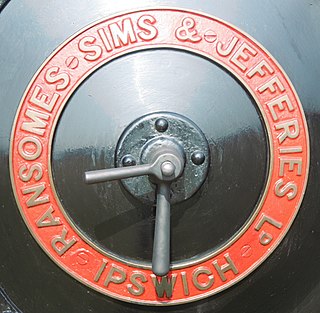
Ransomes, Sims and Jefferies Limited was a major British agricultural machinery maker also producing a wide range of general engineering products in Ipswich, Suffolk including traction engines, trolleybuses, ploughs, lawn mowers, combine harvesters and other tilling equipment. Ransomes also manufactured Direct Current electric motors in a wide range of sizes, and electric forklift trucks and tractors. They manufactured aeroplanes during the First World War. Their base, specially set up in 1845, was named Orwell Works.
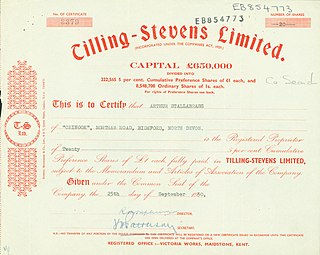
Tilling-Stevens was a British manufacturer of buses and other commercial vehicles, based in Maidstone, Kent. Originally established in 1897, it became a specialist in petrol-electric vehicles. It continued as an independent manufacturer until 1950, when it was acquired by the Rootes Group.
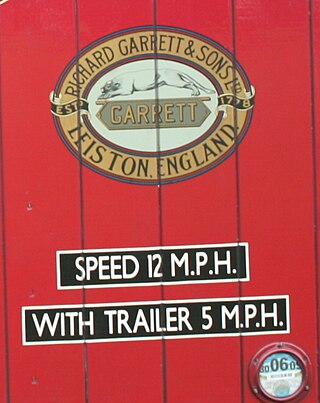
Richard Garrett & Sons was a manufacturer of agricultural machinery, steam engines and trolleybuses. Their factory was Leiston Works, in Leiston, Suffolk, England. The company was founded by Richard Garrett in 1778.

The Ford Thames 400E is a commercial vehicle that was made by Ford UK and introduced in 1957. Production of the range continued until September 1965, by which time a total of 187,000 had been built. Publicity for the model included hiring the Cy Laurie band to make the promotional film short 'Band Wagon', in 1958, preserved in the 'Ford Film and Video Collection' at the National Motor Museum, Beaulieu

Smith Electric Vehicles is a manufacturer of electric trucks. The company, founded in 1920 in the north of England, moved its headquarters to Kansas City, Missouri in 2011. Smith suspended all operations in 2017.

Wales & Edwards was a British manufacturer of milk floats based in Harlescott, Shrewsbury. They were particularly well known for their three wheelers. It was one of the oldest milk float manufacturers lasting from the early 1940s to the early 1990s. In 1989, the company was acquired by Smith Electric Vehicles. Major customers included United Dairies and in the early years, Express Dairies. The basic design evolved throughout W&E's existence before finally ending its days as the Rangemaster.

Morrison-Electricar was a British manufacturer of milk floats and other battery electric road vehicles (BERV). Their first vehicle was built for a bakery in 1933, and the company ceased to exist when it was finally sold to M & M Electric Vehicles in 1983.

Victor Electrics Ltd was a British manufacturer of milk floats and other battery electric road vehicles. The company was formed in 1923 by Outram's Bakery in Southport, Merseyside, to make bread vans for their own use, but they soon diversified into other markets, including the Dairy industry. Their first vehicles had bonnets, like conventional vans, which stored the batteries, but by 1935 all of their vehicles were forward control models, with the cab at the front. They were acquired by Brook Motors in 1967, and became part of the Hawker Siddeley group in 1970. They made a small number of railway locomotives during this latter period.

Harbilt Electrics Trucks was a British manufacturer of milk floats, other battery electric road vehicles and a variety of battery electric vehicles designed for industrial use rather than on the public roads. The company was formed in 1935 in Market Harborough, Leicestershire, and diversified into electric vehicles after the end of the Second World War. They had a good record at exporting their products, with notable successes in Switzerland and California. There were several changes of ownership during the 1970s and 1980s, and the company ceased to exist in 1989.
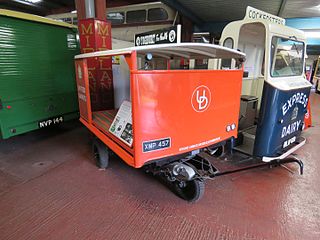
Graiseley Electric Vehicles were produced by the British company Diamond Motors Ltd of Wolverhampton. They had previously made motor cycles, but began producing battery-electric road vehicles (BERV) in the mid 1930s. They were best known for their three-wheeled pedestrian controlled vehicles, although they also produced conventional four-wheeled milk floats, and later manufactured industrial trucks. The company went into liquidation in the early 1960s, although the marque was used by two other companies until at least 1972.

Manulectric was a British marque of milk floats and other battery electric road vehicles. The vehicles were made by Sidney Holes Electric Vehicles, of Brighton, Sussex. They were designed out of Holes' experience of doorstep milk delivery, through Holes and Davigdor Dairies. Both pedestrian controlled vehicles (PCVs) and ride-on models were produced, and entered the market around 1947. The company was bought by Stanley Engineering in the 1960s, and sold to Crompton Electricars in 1972. Some Manulectric models were subsequently manufactured by Harbilt Electric Trucks. At least four Manulectric vehicles have survived, and are privately preserved.
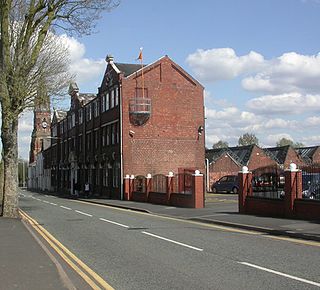
Sunbeam Commercial Vehicles was a commercial vehicle manufacturing offshoot of the Wolverhampton based Sunbeam Motor Car Company when it was a subsidiary of S T D Motors Limited. Sunbeam had always made ambulances on modified Sunbeam car chassis. S T D Motors chose to enter the large commercial vehicle market in the late 1920s, and once established they made petrol and diesel buses and electrically powered trolleybuses and milk floats. Commercial Vehicles became a separate department of Sunbeam in 1931.

Midland Electric Vehicles was a British manufacturer of milk floats and other battery electric road vehicles between 1936 and 1958. They were based in Leamington Spa, and one of their major customers was Midland Counties Dairies, to whom they supplied just the chassis, with bodywork being built by the customer. At least two of their vehicles survive in museums.
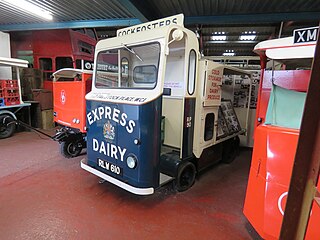
Helecs was a marque of British battery-electric road vehicles, produced initially by the electrical engineers Hindle Smart Co Ltd of Ardwick, Manchester from 1948 onwards. One of their first vehicles was a collaboration with Jensen Motors for a tractor unit, used primarily for railway deliveries, and they then produced a number of vehicles which were aimed at the dairy industry and bodied as milk floats for retail milk delivery. They had some success with exports to Canada, and two independent companies bearing the Helecs Vehicles name were set up, in 1952 and 1955. All of the companies became insolvent in 1956. One of the vehicles for which they built the chassis is on public display at The Transport Museum, Wythall.
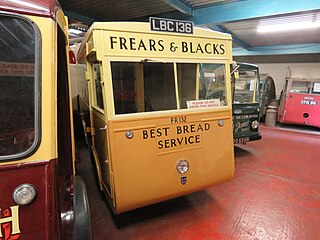
Partridge Wilson Engineering was a company established in Leicester, England in 1926. It initially made radios, and then battery chargers. In 1934 it began to build battery electric road vehicles, producing both cars and milk floats, which were marketed under the Wilson Electric marque. Vehicle production ceased in 1954, but it continued to make chargers and rectifiers. In 1974, it became part of Westinghouse Davenset Rectifiers Ltd, owned by Westinghouse Brake & Signal Company and in 1986 the Leicester site was closed, with manufacturing transferring to Chippenham. At least two of the commercial vehicles and three of the cars have been preserved.
Tomlinson Electric Vehicles was a British manufacturer of milk floats and other battery electric road vehicles, which also supplied vehicles to the Benelux countries. The company was formed in the mid-1930s. In 1949 they were taken over by King's Motors of Oxford, but the Tomlinson name was retained. They made a battery-electric railway locomotive in 1958, and hoped to diversify into this market, but were the subject of a hostile takeover by an asset stripping company in 1961, after which vehicle production ceased.
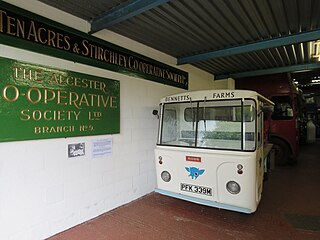
Ross Auto Engineering was a British manufacturer of milk floats and other battery electric road vehicles. The company was formed in 1949 by Victor Electrics, another manufacturer of milk floats. In 1955 they took over the production of Helecs battery electric road vehicles, and also introduced their own models. With the rapid demise of home milk deliveries, production of vehicles ceased in the 1980s, by which time the company had diversified into mobility services, and began trading as Ross Care.

MetroVick electric vehicles were a range of battery electric road vehicles produced by the heavy engineering company Metropolitan-Vickers between 1934 and 1944. The company was renamed Metropolitan-Vickers in 1919, and entered the electric vehicle market in 1934, when they bought up the General Vehicle Company of Birmingham. They inherited the designs for the Gordon range of models, and continued to service and supply parts for the G.V. Electric vehicles. Their main sales seem to have been of light vans and dairy vehicles, in three sizes, which they promoted through a series of exhibitions. During the Second World War, they experienced difficulties in obtaining raw materials, and the number of vehicles that could be built was severely restricted by quotas. Production of the range ceased entirely in 1944, and when hostilities ceased, they sold the electric vehicle business to Brush in 1945.



















